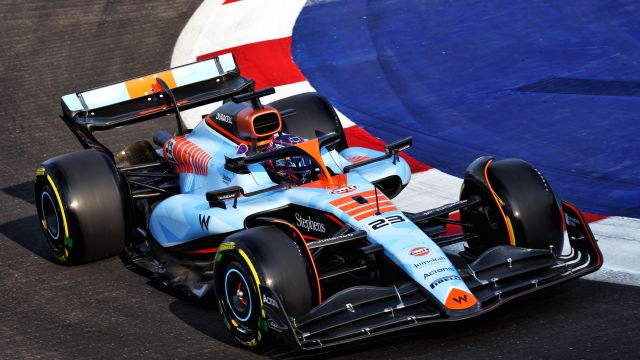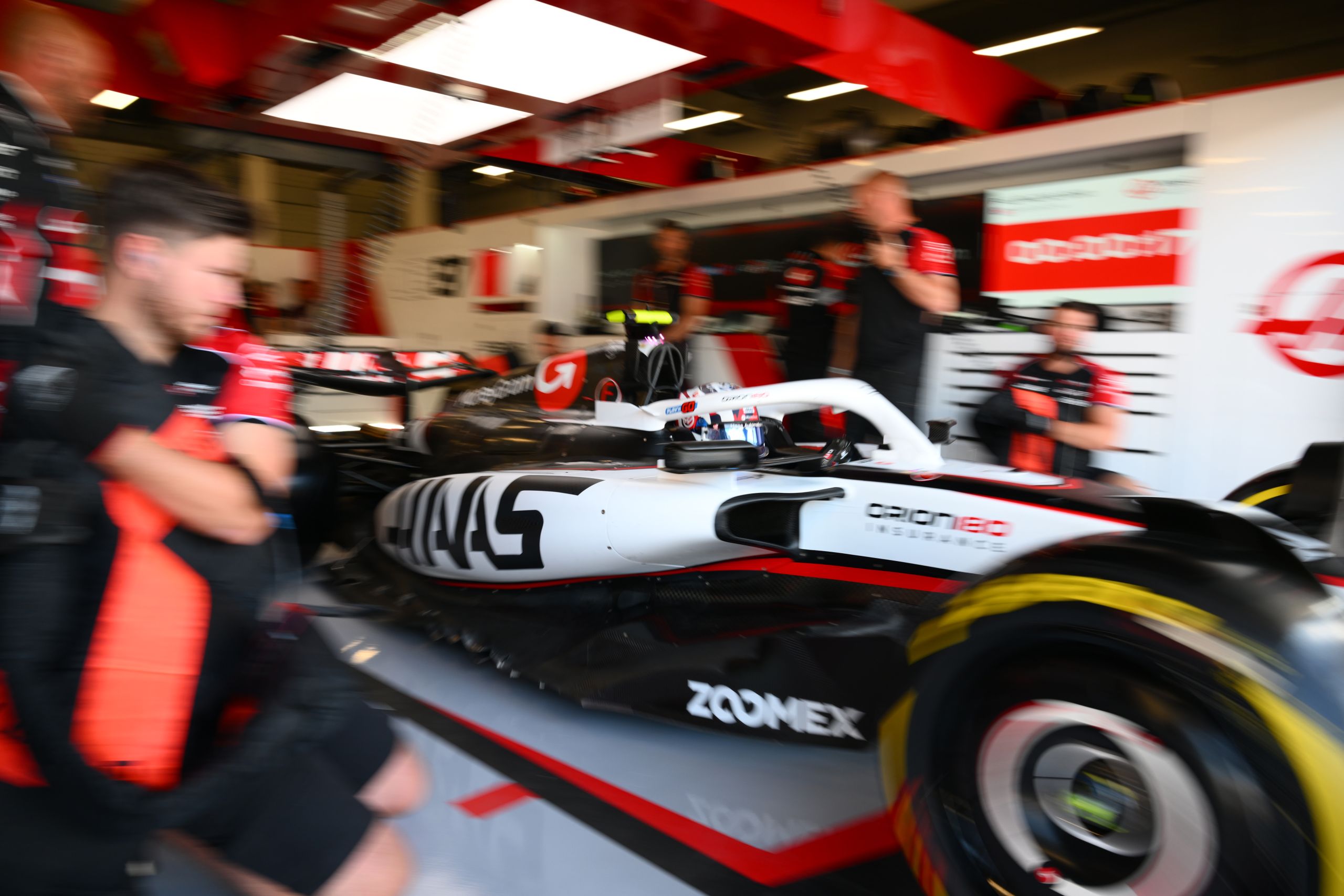What Is The Apex Of A Corner?


The apex of a corner, a term often thrown around in racing circles, is pivotal in achieving optimal lap times and maintaining speed through bends. But what exactly is the apex of a corner, and how does it influence racing strategies?
Key Takeaways:
- The apex is a critical point in racing corners that drivers aim to touch to achieve the fastest line.
- Understanding and utilizing the apex effectively can significantly impact a racer’s performance and lap times.
- Different types of corners and racing scenarios require varied approaches to hitting the apex.
Understanding the Apex: More Than Just a Point in a Turn
The apex refers to the innermost point that a vehicle touches when navigating through a corner. It is not merely a spot on the track but a strategic point that, when approached and exited correctly, allows a racer to maintain maximum possible speed through a turn without unnecessarily overloading the tires or losing control.
The Significance of the Apex in Racing Dynamics
Understanding and effectively utilizing the apex is paramount for racers aiming to achieve optimal lap times. By hitting the apex, drivers can:
- Minimize the cornering distance.
- Maintain higher speeds through the turn.
- Ensure better tire management by reducing excessive wear.
- Achieve a more stable racing line, reducing the likelihood of losing control.
Different Types of Apexes and Their Strategic Use
- Early Apex: Positioned at the beginning of the turn, used strategically in certain racing scenarios.
- Geometric Apex: The midpoint of the corner, often providing the shortest and potentially fastest path.
- Late Apex: Found towards the exit of the turn, sometimes used to prioritize higher exit speeds and better positioning for subsequent straights or corners.
Delving into Racing Strategies: The Art of Cornering
Navigating through corners is an art, where understanding the track, the vehicle, and the prevailing racing conditions are crucial. The apex plays a pivotal role in defining the racing line, which is the path that offers the quickest way through a corner.
The Geometric Line: A Theoretical Fastest Path
The geometric line, often considered the theoretically fastest path, involves connecting the entry, apex, and exit of a corner in a smooth, curved line. This line minimizes the cornering distance and is often used as a baseline for determining racing strategies.
Here’s a video that explains the geometric line and its significance in racing:
The Racing Line: Balancing Speed and Control
The racing line, while influenced by the geometric line, also considers various dynamic factors like tire grip, braking points, and vehicle handling. It may involve variations from the geometric line to accommodate these factors, ensuring that the racer maintains control while also achieving high speeds.
The Late Apex: A Strategy for Overtaking and Defense
The late apex strategy involves delaying the turn-in to touch the apex later in the corner. This approach can provide higher exit speeds and may also be used defensively to prevent opponents from overtaking on the inside.
Analyzing Corners: Different Shapes, Different Strategies
Corners come in various shapes and sizes, each presenting unique challenges and requiring specific strategies to navigate effectively.
Hairpin Turns: Tight Bends and Strategic Braking
Hairpin turns, characterized by their tight, U-shaped bends, require precise braking and a well-calculated approach to the apex to ensure optimal speed without overshooting the turn.

Chicanes: Navigating through Zig-Zags
Chicanes, sequences of tight corners in alternate directions, require racers to strategically choose apexes and racing lines that allow them to navigate through the entire sequence efficiently without losing momentum.

High-Speed Sweeping Corners: Balancing Speed and Stability
Sweeping corners, which are generally taken at higher speeds, require a stable approach to the apex and a carefully chosen racing line to ensure that the vehicle does not become unstable.
Incorporating External Knowledge: Learning from Experts and Analyses
To deepen your understanding of apex strategies and cornering techniques, exploring expert analyses and breakdowns of racing scenarios can be invaluable.
For a detailed breakdown of different apex strategies and their applications in various racing scenarios, you might find this video insightful:
Advanced Strategies and Common Mistakes in Apex Navigation
Navigating through corners with precision and speed is a skill that racers hone through practice, analysis, and continuous learning. In this section, we delve deeper into advanced strategies that racers employ to navigate through various types of corners and explore common mistakes that can impact their performance.
Advanced Strategies: Beyond the Basics
Utilizing Variable Apex Points
Understanding that different racing scenarios may require varied approaches to the apex is crucial for adapting to dynamic racing conditions. Racers often modify their apex points based on factors like tire wear, track conditions, and opponent positioning to optimize their performance.
Maximizing Exit Speeds
In certain scenarios, particularly when a corner is followed by a long straight, maximizing exit speed might be prioritized. Racers may choose a late apex and focus on accelerating smoothly through the corner exit to gain higher speeds on the straight.
Defensive and Offensive Racing Lines
Racers strategically choose their racing lines and apex points to defend their position or attempt overtakes. A defensive line might involve taking a late apex to prevent inside overtakes, while an offensive strategy might involve optimizing entry speed to attempt an overtake before the corner.
Common Mistakes and Their Impact
Misjudging the Braking Point
Braking too early or too late can significantly impact the racer’s approach to the apex and subsequently, their speed through the corner. Early braking might result in lost time, while late braking can lead to overshooting the corner or suboptimal racing lines.
Inconsistent Throttle Application
Smooth and consistent throttle application through the corner, particularly through the apex and exit, is crucial for maintaining stability and speed. Inconsistent or abrupt throttle changes can unsettle the vehicle and result in loss of control or suboptimal exit speeds.
Incorrect Apex Selection
Choosing an incorrect apex, whether it be too early or too late, can impact the racer’s line through the corner and their subsequent positioning on the track. It may result in compromised speed, increased tire wear, or vulnerability to overtakes.
Exploring Diverse Corners: From Street Circuits to Racing Tracks
Different types of racing tracks, from street circuits with tight, angular corners to racing tracks with high-speed bends, present unique challenges and require varied strategies for apex navigation.
Street Circuits: Precision and Caution
Street circuits often feature tight, angular corners where precision in apex navigation and cautious throttle application are crucial to avoid collisions and maintain speed.
Racing Tracks: Speed and Stability
Racing tracks, with their high-speed corners and sweeping bends, require racers to balance speed and stability, ensuring that they navigate through the apex without compromising vehicle control.
Practical Tips and Techniques for Apex Navigation
Navigating through corners with finesse involves a blend of theoretical understanding and practical application. In this section, we delve into practical tips and techniques that anyone can employ to optimize their apex navigation and enhance their cornering skills whether they’re going go-karting with friends or want to make it to the pinnacle of motorsport.
Practical Tips: Enhancing Apex Navigation Skills
Understanding Vehicle Dynamics
Understanding how your vehicle responds to various inputs, such as braking, steering, and throttle application, is crucial for optimizing your approach, navigation, and exit through corners.
Analyzing the Track Layout
Before hitting the track, analyze its layout, identifying the positioning of various corners, their angles, and the subsequent straights or corners that follow them. This analysis will inform your apex navigation strategies and racing line selection.
Practicing Consistent Braking
Developing and practicing consistent braking techniques, ensuring that you hit your braking points accurately, will enable you to approach the apex with optimal speed and control.
Smooth Throttle Application
Ensure that your throttle application through the apex and corner exit is smooth and progressive, maintaining vehicle stability and optimizing exit speed.
Adapting to Dynamic Conditions
Be adaptable and modify your apex navigation strategies based on dynamic racing conditions, such as tire wear, track conditions, and opponent positioning.
Techniques for Various Corner Types
Navigating Hairpin Turns
- Focus on braking accurately to manage your entry speed.
- Aim for a late apex to optimize exit speed for the subsequent straight.
Approaching High-Speed Bends
- Ensure smooth and controlled steering inputs to maintain stability.
- Choose an apex that allows you to maintain a high, yet controlled speed through the bend.
Managing Chicanes
- Identify a path that allows you to navigate through the chicane with minimal steering adjustments.
- Focus on maintaining momentum without compromising control and stability.
In-Depth Analysis: Exploring Racing Scenarios
Analyzing and learning from various racing scenarios, where different apex navigation strategies are employed, can provide valuable insights and learning opportunities.
For a detailed analysis of racing scenarios and strategic apex navigation, consider exploring this insightful video:
The Impact of Vehicle Setup on Apex Navigation
The setup of a vehicle, including aspects like suspension stiffness, tire selection, and aerodynamic settings, can significantly impact its handling through corners and, subsequently, the racer’s apex navigation strategies.
Suspension Setup: Balancing Grip and Stability
Ensuring that the suspension setup provides a balance of grip and stability will enable the racer to navigate through the apex with control, particularly in high-speed corners.
Tire Selection: Optimizing for Track Conditions
Choosing the right tires, considering the track conditions and temperature, will ensure optimal grip through corners, enabling accurate and controlled apex navigation.
Aerodynamic Settings: Managing Downforce and Drag
Optimizing aerodynamic settings to manage downforce and drag will impact the vehicle’s speed and stability through corners, influencing the racer’s approach and navigation through the apex.
Continuous Learning: Adapting and Evolving Strategies
Apex navigation is a skill that racers continuously develop and refine. By analyzing performances, learning from various scenarios, and adapting to dynamic racing conditions, racers can continuously evolve their apex navigation strategies to optimize their performance on the track.
You may also like…


Frequently Asked Questions About Apex Navigation in Racing
Navigating through the intricacies of apexes in racing corners often brings forth numerous questions, as racers seek to optimize their strategies and enhance their performance on the track. In this section, we explore frequently asked questions related to apex navigation, providing insights and answers that delve into the nuances of cornering in racing.
What Factors Influence the Selection of an Apex?
The selection of an apex is influenced by various factors, including:
- Track Layout: The angles and positioning of corners on the track.
- Subsequent Corners or Straights: The layout of the track following the corner.
- Vehicle Dynamics: How the vehicle responds to different racing lines and apex points.
- Racing Conditions: Dynamic factors like tire wear, track conditions, and opponent positioning.
- Racing Strategy: The racer’s overarching strategy, including defensive or offensive approaches.
How Does Tire Wear Impact Apex Navigation?
Tire wear can significantly impact a vehicle’s grip and stability through corners, influencing apex navigation in the following ways:
- Altered Braking Points: Worn tires may require earlier braking points.
- Modified Racing Lines: Racers may need to adjust their racing lines to manage reduced grip.
- Adapted Apex Points: Different apex points might be chosen to optimize worn tire performance.
- Managed Throttle Application: Smooth and controlled throttle application becomes crucial to prevent sliding or spinning.
How Do Racers Adapt Their Apex Navigation During Overtakes?
During overtakes, racers may adapt their apex navigation strategies to either defend their position or successfully navigate past an opponent:
- Defensive Lines: Taking a late apex to prevent inside overtakes and optimize exit speed.
- Offensive Lines: Potentially choosing an early apex to maximize entry speed and position the vehicle for an overtake.
- Altered Braking Points: Adjusting braking points to manage the altered racing line and maintain control during the overtake.
Can the Optimal Apex Vary Between Different Vehicles?
Yes, the optimal apex can vary between different vehicles due to variations in vehicle dynamics, including:
- Handling Characteristics: Different vehicles may have varied handling characteristics that influence their optimal racing line.
- Braking Capabilities: Variations in braking capabilities may impact the braking points and subsequently, the apex navigation.
- Acceleration and Speed: Different acceleration capabilities and top speeds can influence the optimal apex and racing line through corners.
How Do Weather Conditions Impact Apex Navigation?
Weather conditions, particularly rain, can significantly impact apex navigation by altering the track conditions:
- Reduced Grip: Wet conditions reduce tire grip, requiring modified racing lines and apex points.
- Altered Braking Points: Wet tracks may necessitate altered braking points to manage reduced grip and prevent overshooting corners.
- Adapted Throttle Application: Smooth and controlled throttle application becomes pivotal to manage vehicle stability in wet conditions.
How Can Racers Practice and Improve Their Apex Navigation Skills?
Racers can practice and improve their apex navigation skills through:
- Track Practice: Spending time on the track, practicing various racing lines and apex points.
- Data Analysis: Analyzing lap data to identify areas of improvement in apex navigation.
- Simulator Practice: Utilizing racing simulators to practice apex navigation in varied scenarios and conditions.
- Learning from Experts: Analyzing expert racers’ strategies and seeking coaching or feedback.
How Is Apex Navigation Managed in Street Circuits vs. Dedicated Racing Tracks?
Street circuits often feature tight, angular corners and require precision in apex navigation, while dedicated racing tracks may offer high-speed corners that demand a balance of speed and stability. Racers adapt their apex navigation strategies based on the specific challenges presented by different types of tracks, ensuring optimal performance in varied racing scenarios.





